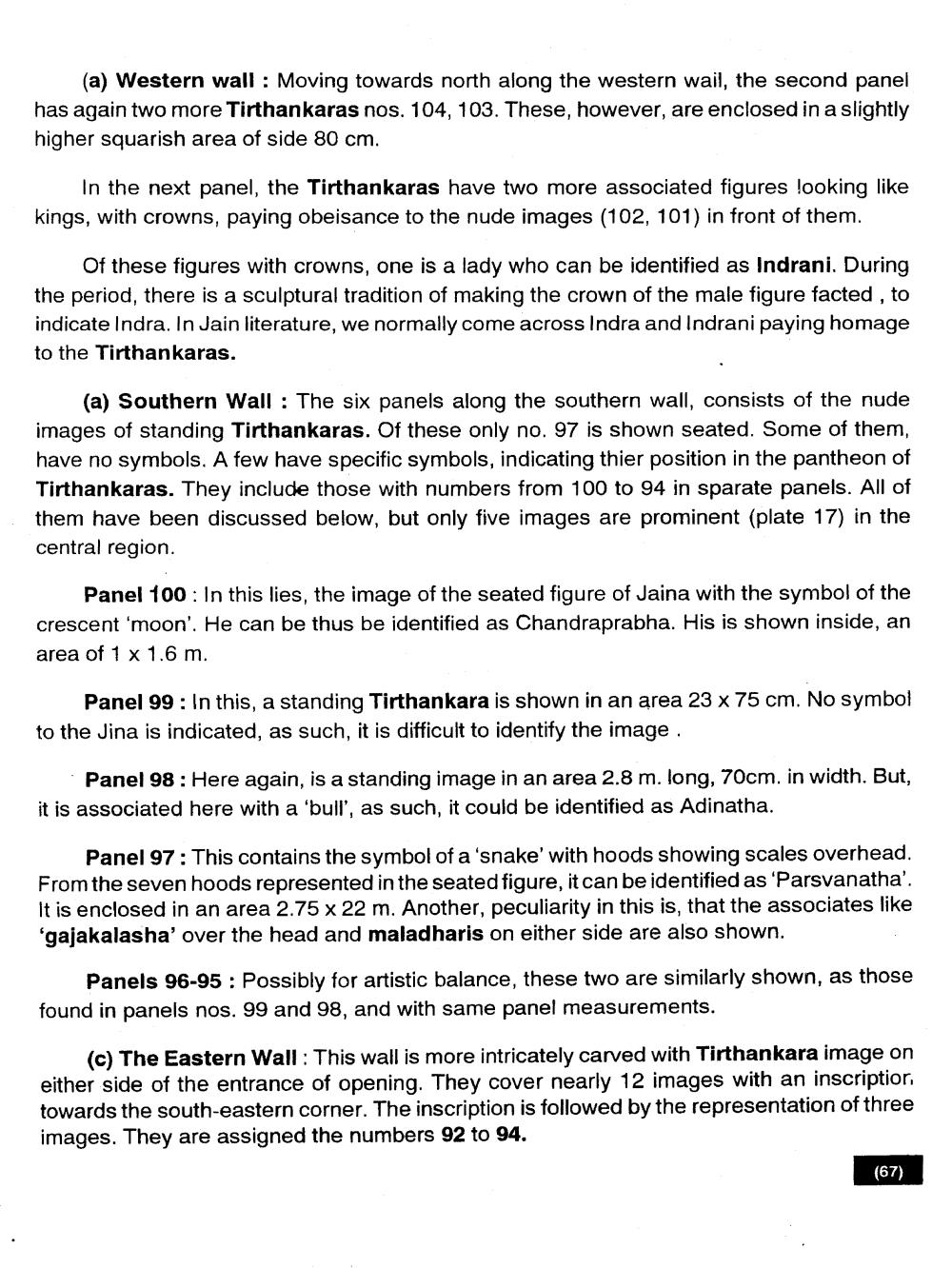________________
(a) Western wall : Moving towards north along the western wail, the second panel has again two more Tirthankaras nos. 104, 103. These, however, are enclosed in a slightly higher squarish area of side 80 cm.
In the next panel, the Tirthankaras have two more associated figures looking like kings, with crowns, paying obeisance to the nude images (102, 101) in front of them.
Of these figures with crowns, one is a lady who can be identified as Indrani. During the period, there is a sculptural tradition of making the crown of the male figure facted, to indicate Indra. In Jain literature, we normally come across Indra and Indrani paying homage to the Tirthankaras.
(a) Southern Wall : The six panels along the southern wall, consists of the nude images of standing Tirthankaras. Of these only no. 97 is shown seated. Some of them, have no symbols. A few have specific symbols, indicating thier position in the pantheon of Tirthankaras. They include those with numbers from 100 to 94 in sparate panels. All of them have been discussed below, but only five images are prominent (plate 17) in the central region.
Panel 100: In this lies, the image of the seated figure of Jaina with the symbol of the crescent 'moon'. He can be thus be identified as Chandraprabha. His is shown inside, an area of 1 x 1.6 m.
Panel 99: In this, a standing Tirthankara is shown in an area 23 x 75 cm. No symbol to the Jina is indicated, as such, it is difficult to identify the image.
Panel 98: Here again, is a standing image in an area 2.8 m. long, 70cm. in width. But, it is associated here with a 'bull', as such, it could be identified as Adinatha.
Panel 97: This contains the symbol of a 'snake' with hoods showing scales overhead. From the seven hoods represented in the seated figure, it can be identified as 'Parsvanatha'. It is enclosed in an area 2.75 x 22 m. Another, peculiarity in this is, that the associates like 'gajakalasha' over the head and maladharis on either side are also shown.
Panels 96-95 : Possibly for artistic balance, these two are similarly shown, as those found in panels nos. 99 and 98, and with same panel measurements.
(c) The Eastern Wall : This wall is more intricately carved with Tirthankara image on either side of the entrance of opening. They cover nearly 12 images with an inscriptior, towards the south-eastern corner. The inscription is followed by the representation of three images. They are assigned the numbers 92 to 94.
(67)




